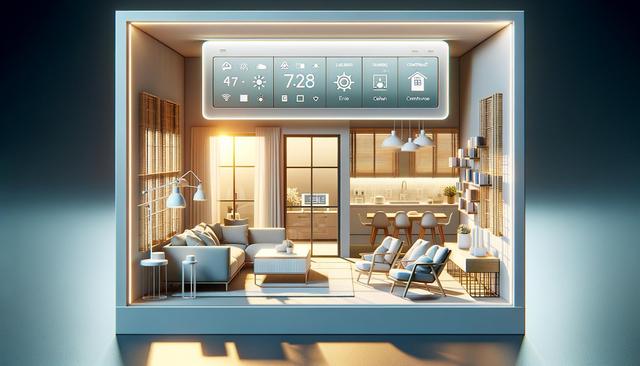Understanding Smart Lighting Control Systems
Smart house lighting control systems are a key component of modern home automation. These systems allow homeowners to manage lighting throughout their property using digital interfaces such as smartphones, tablets, or voice assistants. Unlike traditional light switches, smart lighting is connected to a centralized network, often integrated with a home’s Wi-Fi or dedicated smart home hub. This networked approach provides greater flexibility, energy efficiency, and personalization options. The primary goal is to enhance comfort and functionality while potentially reducing energy consumption.
These systems can be customized to accommodate specific needs, such as dimming lights automatically at certain times of the day or turning them off when no motion is detected. Schedules and automation rules can be set through user-friendly apps, allowing for a highly tailored lighting experience. Voice command capabilities also provide hands-free control, ideal for accessibility and convenience in daily routines.
Components and Setup of a Smart Lighting System
A smart lighting control system typically includes several key components that work together to deliver seamless automation. These components can vary depending on the brand and complexity of the system, but most setups involve:
- Smart bulbs or smart light switches that connect to the network
- A control hub or bridge that communicates with the lights
- Mobile apps for configuration and remote access
- Optional sensors for motion or daylight detection
Installation can range from plug-and-play solutions to more advanced systems requiring electrical modifications. For example, replacing standard bulbs with smart bulbs is straightforward and does not require rewiring. However, installing smart switches may involve working with existing electrical systems, which might necessitate professional assistance. Once installed, users can pair devices with apps or voice assistants and create personalized lighting scenes or schedules.
Benefits of Smart Lighting in Everyday Life
The advantages of using a smart lighting control system go beyond convenience and extend into practical and environmental benefits. One of the most appreciated features is the ability to control lights remotely, making it easier to manage energy use and enhance security. For instance, users can turn lights on while away from home to simulate occupancy, which can deter potential intruders.
Other notable benefits include:
- Energy savings through automation and efficient LED technology
- Enhanced ambiance with customizable brightness and color settings
- Improved accessibility for people with mobility challenges
- Seamless integration with other smart home devices
These systems can also support routines, such as gradually dimming lights at bedtime or brightening them in the morning for a natural wake-up experience. This level of control contributes to overall well-being and energy efficiency in everyday living.
Integration with Broader Smart Home Systems
A smart lighting control system often functions as part of a larger ecosystem of connected devices. Integration with other technologies, such as smart thermostats, security cameras, and voice assistants, can enhance the overall smart home experience. For example, lighting can be linked to door sensors so that lights automatically turn on when someone enters a room or home.
This interoperability allows users to create comprehensive automation routines. A ‘leaving home’ scene might turn off all lights, adjust the thermostat, and lock the doors—all activated with a single command. Compatibility varies by product, so it’s important to ensure that new devices are compatible with existing systems when expanding a smart home network.
In addition, many systems support third-party platforms that offer additional automation capabilities. These platforms enable users to set more complex conditions and actions, such as adjusting lighting based on weather forecasts or syncing lights to music during events. This flexibility makes smart lighting a robust foundation for any home automation project.
Security and Privacy Considerations
As with any technology connected to the internet, smart lighting control systems can pose security and privacy risks if not properly managed. These systems collect data about usage patterns, device status, and sometimes even presence within the home. To protect this information, it is essential to follow best practices for digital security.
Users should:
- Use strong, unique passwords for their smart home accounts
- Keep firmware and apps up to date
- Secure their Wi-Fi networks with encryption and strong credentials
- Limit access permissions to only necessary users
Choosing reputable products from manufacturers with strong privacy policies can also help mitigate risks. Transparency about data collection and usage should be a key consideration when selecting devices. By taking these precautions, homeowners can enjoy the convenience of smart lighting without compromising their digital security.
Conclusion: Making the Switch to Smarter Living
For homeowners seeking a more efficient, customizable, and convenient approach to managing their lighting, smart house lighting control systems offer a compelling solution. These systems blend technology with daily routines to create a more responsive and energy-conscious home environment. Whether starting small with a few smart bulbs or integrating an entire lighting network, the transition to smart lighting can significantly enhance quality of life. With proper setup and attention to security, these systems provide long-term benefits and flexibility for a wide range of lifestyles and living spaces.


